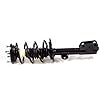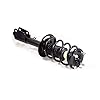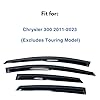Table of Contents
Selecting the best 2 stroke oil for RC gas engines is far more than a routine maintenance task—it’s a critical decision that directly impacts the performance, longevity, and reliability of your valuable RC investment. Unlike ordinary lawn equipment, high-performance RC engines operate at extreme RPMs, significant thermal loads, and under varying load conditions that demand exceptional lubrication properties. The right oil doesn’t just lubricate; it cleans, cools, protects against corrosion, and minimizes carbon deposits that can rob your engine of power and eventually lead to premature failure. This comprehensive guide will dissect everything you need to know about two-stroke oils, from the science of their formulation to practical recommendations that will help you maximize your engine’s potential while avoiding costly damage. Whether you’re bashing in the backyard or competing at the highest levels, understanding this crucial component will transform how you maintain and enjoy your RC vehicle.
Understanding Your RC Gas Engine’s Needs
Before delving into oil specifications, it’s essential to understand why RC gas engines present such unique lubrication challenges. These precision powerplants are marvels of miniature engineering, often operating at 15,000 to 30,000 RPM or higher—significantly beyond the operational range of most commercial two-stroke equipment. At these extreme speeds, the window for effective lubrication is measured in milliseconds, requiring oils that can maintain their protective film strength under intense shear forces and temperatures that can exceed 400°F (204°C).
The fundamental purpose of oil in any two-stroke engine is threefold: to reduce friction between moving components, to transfer heat away from critical areas like the piston crown and bearings, and to provide a sealing effect between the piston rings and cylinder wall. However, in the context of RC gas engines, these requirements become exponentially more critical due to several factors:
- Needle Bearing vs. Bush Design: Many high-performance RC engines utilize needle bearings at both the connecting rod and crankshaft, which have different lubrication requirements compared to the bushings found in some model engines and many utility engines .
- Methanol vs. Gasoline Base Fuels: While this guide focuses on gasoline engines, it’s important to note that methanol-based glow fuels common in some model applications contain much higher oil percentages (17-20%) because methanol lacks the inherent lubricating properties of gasoline .
- Extended High-Load Operation: Unlike chainsaws or weed whackers that operate at variable loads, RC engines often sustain high RPMs under load for extended periods, especially in racing scenarios, generating tremendous heat that can break down inferior oils.
- Precision Tolerances: The machining tolerances in quality RC engines are extremely tight, leaving minimal room for thermal expansion or carbon buildup that can result from suboptimal lubrication.
*Table: RC Engine vs. Commercial 2-Stroke Engine Lubrication Requirements*
| Characteristic | RC Gas Engine | Commercial 2-Stroke |
|---|---|---|
| Typical RPM Range | 15,000 – 35,000+ | 2,500 – 15,000 |
| Operating Temperature | Extremely High | Moderate |
| Load Consistency | Sustained High Load | Variable Load |
| Bearing Type | Often Needle Roller | Varies (Bushings common) |
| Oil Percentage | 2-4% (20:1 to 50:1) | 2-4% (20:1 to 50:1) |
Understanding these extreme operating parameters makes it clear why simply reaching for any two-stroke oil isn’t sufficient for maximizing the performance and lifespan of your RC engine. The best 2 stroke oil for RC gas engines must be specifically formulated to handle these conditions, offering superior protection under circumstances that would rapidly destroy ordinary lubricants.
The Anatomy of Two-Stroke Oil: What Makes It Effective?
Two-stroke oils are complex chemical formulations designed to perform multiple simultaneous functions under extreme conditions. To truly identify the best 2 stroke oil for RC gas engines, it’s essential to understand its fundamental components and how they interact with your engine.
Base Oil Types: The Foundation of Lubrication
The base oil constitutes the primary component of any two-stroke oil, typically representing 70-90% of the formulation. The type of base oil used fundamentally determines the oil’s performance characteristics, cleaning properties, and burn characteristics.
- Castor Oil: Derived from the castor bean, this vegetable-based oil was among the earliest lubricants used in model engines and remains popular today for certain applications. Castor oil forms an exceptionally strong lubricating film under high temperatures and pressures, offering outstanding protection during extreme operating conditions. However, it has significant drawbacks: it tends to form gummy deposits and carbon buildup when not subjected to high enough temperatures, can separate from fuel when cold, and requires more frequent engine cleaning. Many racers use castor-based oils or blends for competition where maximum protection is prioritized over cleanliness.
- Synthetic Oil: Chemically engineered hydrocarbon compounds designed specifically for lubrication purposes. Synthetic oils offer several advantages including excellent thermal stability (resisting breakdown at high temperatures), low deposit formation, consistent viscosity across a wide temperature range, and reliable mixing properties with no separation issues. Modern synthetic oils for RC engines have advanced significantly, with formulations like Redline Two-Stroke Racing Oil demonstrating exceptional ability to “keep carbon buildup to a minimum and maximizing internal parts life” according to engine manufacturers who recommend them .
- Semi-Synthetic Blends: These oils combine synthetic and castor (or sometimes mineral) base oils in an attempt to balance the benefits of both. The goal is to provide the high-temperature protection and film strength of castor oil with the cleanliness and stability of synthetics. These blends are popular among enthusiasts who want extra protection without the extensive maintenance requirements of pure castor oil.
Additive Packages: The Performance Enhancers
Beyond the base oil, sophisticated additive packages are what truly differentiate premium oils from basic formulations. These chemical compounds typically comprise 10-30% of the total formulation and serve specialized functions:
- Anti-Wear Additives: Compounds like ZDDP (Zinc dialkyldithiophosphate) form protective layers on metal surfaces that prevent metal-to-metal contact during boundary lubrication conditions (startup, shock loading).
- Detergents and Dispersants: These chemicals work to keep combustion byproducts, carbon, and other contaminants in suspension within the oil, preventing them from forming deposits on pistons, rings, and exhaust ports. This is crucial for maintaining performance between cleanings.
- Corrosion and Rust Inhibitors: Particularly important for RC engines that may sit between uses, these additives protect steel components from acidic combustion byproducts and water absorption that can occur from alcohol in fuel or atmospheric humidity .
- Antioxidants: Extend the oil’s life by slowing the oxidative breakdown that occurs when oil is exposed to high temperatures and oxygen.
- Smoke Suppressants: Help control the amount of visible exhaust smoke, which is especially valuable for track environments and visual appeal.
Table: Two-Stroke Oil Base Types Comparison
| Base Oil Type | Advantages | Disadvantages | Best For |
|---|---|---|---|
| Synthetic | Clean burning, consistent, stable, mixes well | Can be more expensive, less “film strength” at extreme temps | All-around use, racing, where cleanliness is priority |
| Castor | Exceptional film strength, bio-degradable | Gumming, carbon deposits, separates when cold | Extreme competition, vintage engines, maximum protection scenarios |
| Semi-Synthetic | Balance of protection and cleanliness | May inherit some disadvantages of both types | Enthusiasts seeking extra protection without pure castor maintenance |
The interaction between base oils and additives creates the final performance characteristics that determine whether an oil is truly worthy of being called the best 2 stroke oil for RC gas engines. Premium oils like Redline, which is specifically recommended by manufacturers like Desert Aircraft for its ability to minimize carbon while maximizing component life, represent the pinnacle of this formulation science .
Critical Factors in Evaluating the Best 2 Stroke Oil for RC Gas Engines
When comparing different oil options for your RC vehicle, several key performance criteria separate adequate lubricants from exceptional ones. Understanding these factors will help you make an informed decision based on your specific engine requirements and operating conditions.
Lubricity and Film Strength
At the most fundamental level, an oil’s primary job is to prevent metal-to-metal contact between moving components. Lubricity refers to the oil’s ability to reduce friction, while film strength describes its capacity to maintain a protective layer between components under extreme pressure. In high-RPM RC engines, the film strength becomes particularly critical at the connecting rod bearings, wrist pin, and between the piston rings and cylinder wall. Oils with superior film strength maintain protection during the instant of combustion when pressures are highest, preventing the microscopic welding and tearing of metal surfaces that leads to premature wear. Synthetic oils typically offer excellent film strength across a wide temperature range, while castor oils are renowned for their exceptional film strength at peak temperatures, though with the tradeoff of increased deposit formation.
Clean-Burning Properties and Deposit Formation
How an oil behaves during the combustion process directly impacts engine maintenance and long-term performance. High-quality oils leave minimal carbon deposits, varnish, or gumming on piston crowns, ring grooves, spark plugs, and exhaust systems. Excessive deposit buildup can lead to pre-ignition, ring sticking, reduced heat transfer, and power loss over time. As noted by Desert Aircraft, they recommend Redline Two-Stroke Racing Oil specifically because it has “proven to be the best choice for keeping carbon buildup to a minimum” . Clean-burning synthetic oils can significantly extend maintenance intervals and maintain consistent performance throughout the engine’s life.
Suspension Characteristics and Mixing Ability
A quality two-stroke oil should mix readily and completely with gasoline, forming a stable solution that doesn’t separate over time. This ensures consistent lubrication regardless of how long the fuel has been stored or whether the engine is started after sitting. Separation can lead to oil-deficient fuel entering the engine, causing catastrophic damage. Modern synthetic oils typically excel in this area, while pure castor oils are more prone to separation, especially in colder temperatures or when stored for extended periods. The oil should remain in suspension throughout the fuel’s lifespan, typically several months when properly stored.
Protection Against Rust and Corrosion
This often-overlooked property is crucial for RC engines that may sit between uses. Combustion of fuels produces water vapor as a byproduct, which can condense inside the engine as it cools, leading to rust formation on steel components like bearings and crankshafts. Additionally, as noted by RC Model Reviews, nitromethane used in some fuels can produce “corrosive (acidic) byproducts when it’s burnt” . Premium oils contain corrosion inhibitors that protect metal surfaces during both operation and storage, extending bearing life and preventing the pitting that can lead to premature failure.
Smoke Production and Environmental Considerations
While some smoke is inevitable with two-stroke operation, excessive smoke can be a nuisance on tracks and in residential areas. Quality oils combust more completely, reducing visible smoke while maintaining lubrication. Additionally, environmental considerations such as biodegradability may influence some users’ choices, with castor-based oils offering advantages in this area being plant-derived.
Top Contenders: Reviewing the Best 2 Stroke Oil for RC Gas Engines
Based on extensive user experiences, manufacturer recommendations, and technical analysis, several oils consistently rise to the top as exceptional choices for RC gas engines. The following breakdown examines these premium options to help you select the right oil for your specific application.
Redline Two-Stroke Racing Oil
Overview: Redline is frequently cited as a top-tier synthetic oil that has earned official recommendations from major engine manufacturers. Desert Aircraft, a respected name in the industry, explicitly states: “We at DA highly recommend running Redline 2 Stroke Racing Oil in our engines. Over the years it has proven to be the best choice for keeping carbon buildup to a minimum and maximizing internal parts life” .
Technical Properties: This full-synthetic formulation is engineered specifically for high-performance two-stroke engines. It features advanced ester synthetic base oils combined with a sophisticated additive package that provides exceptional protection against wear and deposit formation. The oil offers excellent thermal stability, maintaining its viscosity and protective qualities even under extreme temperatures encountered in high-output RC engines.
Mixing Ratios: Desert Aircraft recommends mixing Redline at a 40:1 ratio (3.2 oz per gallon), noting that “one 16oz bottle will last 5 gallons of fuel and the gallon jug will last 40 gallons of fuel” . Many users successfully run this oil at ratios between 32:1 and 50:1 depending on their specific engine and operating conditions.
Best For: Serious racers, large-scale gas engines, and users who prioritize engine longevity and minimal maintenance. It’s particularly well-suited for engines that operate under sustained high loads where carbon buildup is a concern.
VP Racing Fuels Two-Stroke Oils
Overview: VP Racing Fuels brings nearly 50 years of specialty fuel experience to the RC market with their range of premium oils . They offer formulations tailored to different needs, from their synthetic/castor blends for racers to full synthetic options.
Technical Properties: VP’s oils are designed with competitive performance in mind. Their Pro Race blend utilizes a synthetic/castor oil mix, aiming to combine the protective qualities of castor with the cleaner operation of synthetics. Their TT blend features a proprietary synthetic package optimized for track performance. These formulations focus on maximizing power output while providing adequate protection under racing conditions.
Mixing Ratios: VP’s recommended ratios typically range from 32:1 to 40:1 depending on the specific product and application. Always consult the manufacturer’s guidelines for the particular oil you select.
Best For: Competitive racers looking for every performance advantage, particularly those already using VP racing fuels who want a complete fuel and oil system designed to work together.
High-Quality Synthetic Alternatives
Overview: Beyond the top two recommendations, several other synthetic oils have proven effective in RC applications, including options from Amsoil, Motul, and Lucas Oil. These oils share many of the beneficial characteristics of premium synthetics but may differ in specific additive packages and price points.
Technical Properties: These synthetics typically feature high detergent levels to keep engines clean, strong anti-wear additive packages, and excellent thermal stability. Many are designed for powersports applications (dirt bikes, jet skis, snowmobiles) and translate well to the demanding environment of RC gas engines.
Mixing Ratios: Most quality synthetics perform well at ratios between 32:1 and 50:1. Some experimentation within this range may be necessary to find the optimal balance of protection, cleanliness, and smoke production for your specific engine.
Best For: Budget-conscious enthusiasts who still demand high-quality protection, users with multiple two-stroke equipment types who want to standardize on one oil, or those with good local availability of these brands.
Table: Premium Two-Stroke Oil Comparison for RC Applications
| Oil Brand | Base Type | Recommended Ratio | Key Advantages | Ideal Applications |
|---|---|---|---|---|
| Redline | Full Synthetic | 40:1 | Minimal carbon, maximum parts life, manufacturer recommended | All high-performance applications, especially where longevity is priority |
| VP Racing | Synthetic/Castor Blend & Full Synthetic | 32:1 to 40:1 | Race-focused formulation, matched to VP fuels | Competitive racing, maximum power output |
| Quality Synthetics | Full Synthetic | 32:1 to 50:1 | Widely available, cost-effective, clean operation | General use, bashing, practice, multiple equipment types |
Mixing Practices and Usage Guidelines for Optimal Performance
Simply selecting a premium oil isn’t enough—proper mixing and usage are equally critical to achieving the protection and performance you expect from the best 2 stroke oil for RC gas engines. Following established best practices ensures consistent lubrication and prevents potentially catastrophic engine failures.
Selecting the Proper Mixing Ratio
The oil-to-gasoline ratio represents one of the most debated topics in two-stroke engine maintenance, with recommendations varying widely based on engine type, application, and personal preference. The ratio decision involves balancing several competing factors:
- Engine Manufacturer Specifications: Always start with your engine manufacturer’s recommended ratio. These guidelines are based on extensive testing specific to your engine’s design, bearing types, and intended operating conditions.
- Bearing Type Considerations: Engines with bushed bearings (rather than needle bearings) typically require higher oil percentages, as noted by RC Model Reviews: “a bushing needs far more [oil] than needle-roller bearings” to form a protective layer that prevents metal-to-metal contact .
- Application and Load: Sustained high-RPM operation (racing) generally benefits from slightly richer oil mixtures (32:1 to 40:1) for maximum protection, while casual bashing at varying throttle positions may perform perfectly well at leaner mixtures (40:1 to 50:1).
- Oil Quality: Higher quality synthetic oils can typically be run at leaner mixtures while still providing adequate protection. As RC Model Reviews notes, advances in oil technology mean “it is now possible in some cases to run as little as 10% oil without compromising the life or performance of an engine” in glow applications, though gasoline engines generally run leaner mixtures .
Most modern high-performance RC gas engines perform well with oil ratios between 32:1 and 50:1 when using premium synthetic oils. A ratio of 40:1 represents a solid starting point for many applications, providing 3.2 ounces of oil per gallon of gasoline.
Precision Mixing Procedures
Consistent, thorough mixing is non-negotiable for proper engine protection. Follow these steps for perfect fuel preparation:
- Use Clean, Fresh Fuel: Always start with high-octane (91-93) ethanol-free gasoline when possible. Ethanol can attract moisture and separate from oil, causing lubrication issues.
- Measure Precisely: Use a graduated mixing bottle specifically designed for two-stroke fuel preparation. Never “estimate” ratios by pouring—even small errors can significantly impact lubrication.
- Add Oil First: Pour the measured amount of oil into an empty fuel container, then add gasoline. This helps ensure more complete mixing as the gasoline enters the container.
- Shake Vigorously: Seal the container and shake for 30-60 seconds to ensure the oil is completely dissolved in the gasoline.
- Label and Date: Mark the container with the fuel type, oil ratio, and mixing date. Use fuel within 30-60 days for optimal performance.
- Agitate Before Use: Always shake the fuel container immediately before refilling your RC vehicle’s tank to ensure the oil remains in suspension.
Engine Break-In Procedures
Proper break-in establishes the foundation for your engine’s entire service life. While procedures vary by manufacturer, most follow this general pattern:
- Use Richer Oil Mixture: During break-in, many experts recommend using a slightly richer oil mixture (approximately 25-30% more oil than normal, e.g., 32:1 instead of 40:1) for the first few tanks to ensure ample lubrication as components seat.
- Vary Throttle Position: Avoid sustained RPMs during initial runs. Instead, cycle through various throttle positions to create varying pressures that help seat rings properly against the cylinder wall.
- Allow Cooling Cycles: Let the engine cool completely between break-in runs to allow metals to contract and redistribute any microscopic high spots.
- Monitor Temperature: Use a temperature gun to ensure the engine isn’t running excessively hot during break-in, which could indicate overly lean conditions or lubrication issues.
Storage and Maintenance Considerations
Proper fuel storage and engine maintenance practices complement your oil choice:
- Fuel Lifespan: Mixed gasoline with oil has a limited shelf life. Even when stabilized, try to use mixed fuel within 30 days for optimal performance.
- After-Run Procedures: For engines that will sit for extended periods, consider using after-run oil to protect against corrosion. Alternatively, simply running the engine dry of fuel (not oil) before storage can help prevent varnish buildup.
- Regular Inspection: Periodically check for carbon buildup in the exhaust system and on the piston through the exhaust port. Minimal deposits indicate your oil is burning cleanly.
Troubleshooting Common Oil-Related Issues
Even with quality oils, problems can arise. Understanding how to diagnose and address oil-related issues will help you maintain optimal engine performance and avoid costly damage.
Excessive Smoke Production
While some smoke is normal with two-stroke operation, excessive smoke typically indicates one of several issues:
- Overly Rich Oil Mixture: The most common cause of heavy smoke is too much oil in the fuel mixture. Double-check your ratio calculations and measuring accuracy.
- Incorrect Oil Type: Some oils naturally produce more smoke than others. Castor-based oils and certain synthetics may create more visible exhaust.
- Engine Tuning Issues: An overly rich air/fuel mixture can contribute to incomplete combustion and increased smoke. Ensure your carburetor is properly tuned.
- Worn Engine Components: Excessive crankcase clearance or worn seals can cause oil to bypass the normal combustion process, leading to increased smoke.
Carbon Deposit Buildup
Significant carbon accumulation on the piston crown, spark plug, or exhaust port indicates combustion issues:
- Oil Not Burning Cleanly: Lower quality oils or oils not suited to your engine’s operating temperature may not combust completely, leaving carbon deposits. Consider switching to a cleaner-burning synthetic if deposits accumulate rapidly.
- Over-Rich Air/Fuel Mixture: Too much fuel in the combustion process can prevent complete oil combustion, leading to deposits.
- Low Operating Temperatures: Engines that rarely reach optimal operating temperature may accumulate more deposits, as the oil doesn’t get hot enough to combust completely. This is common in engines used primarily at low RPMs or for short durations.
- Oil Percentage Too High: Excess oil in the mixture cannot all be burned completely, leading to deposit formation. If running a rich oil ratio, consider gradually leaning the mixture toward the manufacturer’s recommendation.
Spark Plug Fouling
Frequent spark plug fouling suggests combustion issues related to your oil:
- Oil Type Mismatch: Some oils foul plugs more readily than others, particularly at lower operating temperatures. Premium synthetics typically foul plugs less frequently.
- Incorrect Heat Range: A spark plug with too cold a heat range may not burn off oil deposits, leading to fouling.
- Excessive Oil Percentage: Too much oil in the mixture can deposit on the plug, preventing proper spark.
- Incomplete Combustion: Tuning issues, weak ignition, or improper fuel can prevent complete combustion, leaving oil residue on the plug.
Premature Engine Wear
Unexpected wear patterns, bearing failure, or piston scoring often point to lubrication deficiencies:
- Insufficient Oil: Too little oil in the mixture (too lean a ratio) fails to provide adequate protection under high loads.
- Oil Type Unsuitable for Application: The oil may lack the necessary film strength or thermal stability for your specific engine and operating conditions.
- Fuel/Oil Separation: The oil may be separating from the fuel before it reaches the engine, potentially due to improper mixing, prolonged storage, or incompatible formulations.
- Overheating: Chronic engine overheating, regardless of oil quality, can break down oil and eliminate its protective properties.
Conclusion: Making Your Final Choice
Selecting the best 2 stroke oil for RC gas engines ultimately depends on balancing multiple factors specific to your equipment, usage patterns, and performance expectations. Through our comprehensive examination of oil types, performance characteristics, and real-world applications, several key principles emerge to guide your decision.
First, engine manufacturer recommendations should take precedence. When manufacturers like Desert Aircraft specifically recommend products like Redline Two-Stroke Racing Oil based on their extensive testing, this guidance carries significant weight and often represents the safest choice for optimal engine longevity .
Second, consider your primary use case. For competitive racing where maximum power and protection are paramount, premium synthetics or synthetic/castor blends from companies like VP Racing may offer advantages. For general bashing, practice, and recreational use, high-quality synthetics provide excellent protection with minimal maintenance requirements.
Third, don’t underestimate the importance of proper mixing and ratio selection. Even the finest oil cannot protect your engine if improperly mixed or used at inappropriate ratios. The 40:1 ratio commonly recommended provides a solid starting point that can be fine-tuned based on your observations of engine cleanliness and performance.
Finally, let performance indicators guide refinements. Monitor your engine’s spark plug color, exhaust residue, piston condition (when accessible), and overall performance. These indicators will tell you whether your current oil and ratio are optimal or need adjustment.
The pursuit of the best 2 stroke oil for RC gas engines is ultimately about maximizing both performance and longevity—ensuring your investment delivers countless hours of reliable operation. By applying the knowledge contained in this guide, you’re now equipped to make an informed decision that will keep your RC engine running strong for years to come.
Key Takeaways
- The best 2 stroke oil for RC gas engines balances superior lubricity, clean-burning properties, and corrosion protection tailored to extreme RC operating conditions.
- Full synthetic oils, like Redline, are highly recommended by engine manufacturers for minimizing carbon buildup and maximizing engine life .
- Oil mixing ratios between 32:1 and 50:1 are common for modern synthetics, with 40:1 being a reliable starting point for many engines.
- Proper mixing technique—using precise measurements, fresh fuel, and vigorous shaking—is as critical as oil selection for ensuring consistent engine protection.
- Regular inspection of engine components for carbon deposits and wear patterns provides valuable feedback on whether your oil choice and ratio need adjustment.
Sources
- Desert Aircraft – Two-Stroke Oil Recommendations
- RC Model Reviews – Model Engine Oils
- VP Racing Fuels – RC Nitro Fuels













































